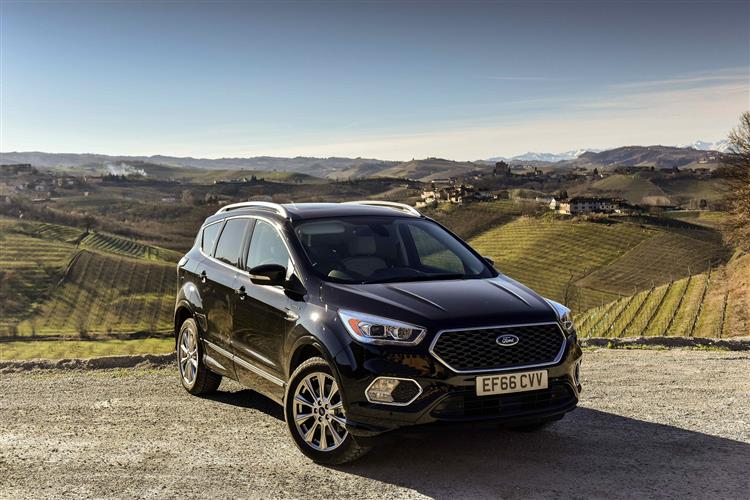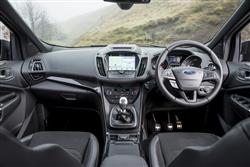KUGA CLEANS UP ITS ACT (some text hidden) --NONE--
By Jonathan Crouch
Introductionword count: 108
The Ford Kuga evolved quite a lot in 'C520'-series second generation guise launched in 2012, but ideally as a used buyer, you'd stretch to the facelifted version of this design launched in 2016. In this improved form, this Kuga became a more credible contender that'll be equally attractive both to Qashqai-class Crossover customers and RAV4-style soft roading SUV buyers. Compared to the original version of this MK2 model, this enhanced car features sharper styling, a much nicer cabin and extra technology that segment buyers will like. In short, if you're shopping for a mid-sized SUV in this sector, this is a car you very much need to consider.
Modelsword count: 24
5dr SUV (1.5T EcoBoost - 120,150 & 182PS / 1.5 TDCI - 120PS / 2.0 TDCi 150PS, 180PS [Zetec, Titanium, Titanium X, ST-Line, Vignale])
Historyword count: 158
The Kuga was a mid-sized SUV first launched by Ford in 2008, then introduced in second generation 'C520'-series guise in 2012, a car which was further enhanced in 2016 to create the model we're looking at here. The updates made here were mainly of the kind you'd expect would be needed for this growing fashion-conscious market - smarter looks, extra media connectivity and more sophisticated safety provision. The engineering changes made in 2016 were limited to the sportier suspension set-up provided with a new mid-range ST-Line trim level and the addition of a fresh 1.5-litre entry-level diesel engine. There was also a fresh flagship Vignale specification available at the top of the range, creating luxurious variants that Ford rather optimistically hoped will appeal to buyers who might be considering a car of this kind from one of the German premium brands. The Kuga sold in this form until Spring 2020, when a new third generation design was launched.
What You Getword count: 362
You can see why facelift styling updates are necessary. Take a look at the original version of this second generation Kuga, produced between 2012 and 2015. It's a bit bland compared to this revised version. And being 'bland' is an inexcusable fault in today's highly fashion-conscious Crossover segment. What didn't change as part of the MK2 Kuga update package was the way that this Ford remained a global car in every sense, the chassis built in Cologne, the powertrain in Dagenham and the upper body and interior in Detroit, with final assembly for this Kuga in Valencia, Spain. Up front, the bolder nose section follows the styling direction set by the brand's larger Edge model, dominated by a large trapezoidal grille, the final finish of which varies depending on the trim level you've decided upon. High-set headlamps with smart LED daytime running light strips flank this opening and original buyers could upgrade the main lights to include a Bi-Xenon 'Adaptive Front Lighting System'. And at the wheel? Well it's something of a masterclass in demonstrating just how much you can change the both the feel and the general ergonomics of an automotive interior without altering its basic design one jot. Come to this car from the original second generation model and you're going to wonder where all the buttons have gone. A proper infotainment touchscreen set-up can get rid of much of that kind of clutter - as it did here. Someone familiar with the pre-facelift (2012-2015-era) version of this Ford will also notice that in this updated design, there's more storage space in the lower centre console area, extra stowage areas freed up by the installation of an electronic handbrake. In the back, the central transmission tunnel's usefully low and it's important to note that there's as much room for legs, knees and heads as in the best of this Kuga's rivals from this period. This bench can't feature Volkswagen Tiguan-like sliding functionality, but the backrest does recline for greater comfort on longer journeys and the optional Panorama roof gave this part of the interior a light and airy feel. Once the restyled hatch is raised, a 456-litre boot is revealed.
To see the full road test text contact us on 0330 0020 227
Pictures (high res disabled)

.jpg)
|
.jpg)
|
.jpg)
| |||
.jpg)
|
.jpg)
|
.jpg)
| |||
.jpg)
|
.jpg)
|

|



